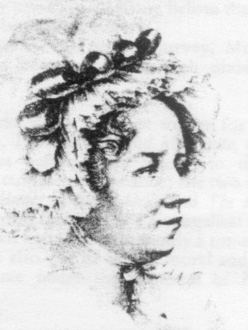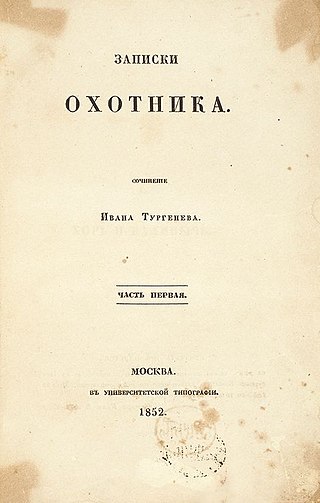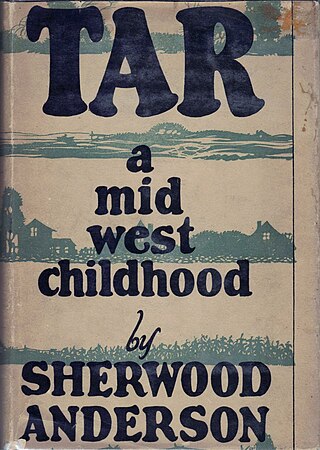
Winesburg, Ohio is a 1919 short story cycle by the American author Sherwood Anderson. The work is structured around the life of protagonist George Willard, from the time he was a child to his growing independence and ultimate abandonment of Winesburg as a young man. It is set in the fictional town of Winesburg, Ohio, which is loosely based on Anderson's childhood memories of Clyde, Ohio.

Sherwood Anderson was an American novelist and short story writer, known for subjective and self-revealing works. Self-educated, he rose to become a successful copywriter and business owner in Cleveland and Elyria, Ohio. In 1912, Anderson had a nervous breakdown that led him to abandon his business and family to become a writer.

Blood Brothers is a musical with book, lyrics, and music by Willy Russell and produced by Bill Kenwright. The story is a contemporary nature versus nurture plot, revolving around fraternal twins Mickey and Eddie, who were separated at birth, one subsequently being raised in a wealthy family, the other in a poor family. The different environments take the twins to opposite ends of the social spectrum, one becoming a councillor, and the other unemployed and in prison. They both fall in love with the same girl, causing a rift in their friendship and leading to the tragic death of both brothers. Russell says that his work was based on a one-act play that he read as a child "about two babies switched at birth ... it became the seed for Blood Brothers."

Mary Martha Sherwood was a nineteenth-century English children's writer. Of her more than four hundred works, the best known include The History of Little Henry and his Bearer (1814) and the two series The History of Henry Milner (1822–1837) and The History of the Fairchild Family (1818–1847). Her evangelicalism permeated her early writings, but later works cover common Victorian themes such as domesticity.

A Sportsman's Sketches is an 1852 cycle of short stories by Ivan Turgenev. It was the first major writing that gained him recognition.

The Torrents of Spring is a novella written by Ernest Hemingway, published in 1926. Subtitled "A Romantic Novel in Honor of the Passing of a Great Race", Hemingway used the work as a spoof of the world of writers. It is Hemingway's first long work and was written as a parody of Sherwood Anderson's Dark Laughter.

Interpreter of Maladies is a book collection of nine short stories by American author of Indian origin Jhumpa Lahiri published in 1999. It won the Pulitzer Prize for Fiction and the Hemingway Foundation/PEN Award in the year 2000 and has sold over 15 million copies worldwide. It was also chosen as The New Yorker's Best Debut of the Year and is on Oprah Winfrey's Top Ten Book List.

Stones is the second book of short stories by Timothy Findley. It was first published by Viking Canada in 1988.
Oldtown Folks is an 1869 novel written by Harriet Beecher Stowe. It is written from the first-person perspective of a young man named Horace Holyoke, who describes his youth in fictional Oldtown, Massachusetts - including humorous depictions of daily life, behavior of local towns folk, and the adoption of Harry and Eglantine Percival.

The Country of the Pointed Firs is an 1896 book by American writer Sarah Orne Jewett. It is considered by some literary critics to be her finest work.

Mosquitoes is a satiric novel by the American author William Faulkner. The book was first published in 1927 by the New York-based publishing house Boni & Liveright and is the author's second novel. Sources conflict regarding whether Faulkner wrote Mosquitoes during his time living in Paris, beginning in 1925 or in Pascagoula, Mississippi in the summer of 1926. It is, however, widely agreed upon that not only its setting, but also its content clearly reference Faulkner's personal involvement in the New Orleans creative community where he spent time before moving to France.

"Cat in the Rain" is a short story by American author Ernest Hemingway (1899-1961), first published by Richard Hadley of Boni & Liveright in 1925 in the short story collection In Our Time. The story is about an American husband and wife on vacation in Italy. Critical attention focuses chiefly on its autobiographical elements and on Hemingway's "theory of omission".

My Sweet Audrina is a 1982 novel by V. C. Andrews. It was the only stand-alone novel published during Andrews' lifetime and was a number-one best-selling novel in North America. The story takes place in the Mid-Atlantic United States during the 1960s and 1970s. The story features diverse subjects, such as brittle bone disease, rape, posttraumatic stress disorder and diabetes, in the haunting setting of a Victorian-era mansion near the fictitious River Lyle.

The Governess; or, The Little Female Academy by Sarah Fielding is the first full-length novel written for children. As such and in itself it is a significant work of 18th-century children's literature.

Elephant and Other Stories (1988) is the last collection of short stories by American writer Raymond Carver. They were the final seven stories Carver wrote before his death, and only appeared as a separate book in Great Britain. The book was published by Collins Harvill in London on August 4, 1988, two days after Carver's death.

Beauty for Sale is a 1933 American pre-Code film about the romantic entanglements of three beauty salon employees. Based on the 1933 novel Beauty by Faith Baldwin, it stars Madge Evans, Alice Brady, Otto Kruger and Una Merkel.

Dreams of My Russian Summers is a French novel by Andrei Makine, originally published in 1995. It won two top French awards, the Prix Goncourt and the Prix Médicis. The novel is told from the first-person perspective and tells the fictional story of a boy's memories and experiences with his French grandmother in the Soviet Union in the 1960s and '70s.

Boni & Liveright is an American trade book publisher established in 1917 in New York City by Albert Boni and Horace Liveright. Over the next sixteen years the firm, which changed its name to Horace Liveright, Inc., in 1928 and then Liveright, Inc., in 1931, published over a thousand books. Before its bankruptcy in 1933 and subsequent reorganization as Liveright Publishing Corporation, Inc., it had achieved considerable notoriety for editorial acumen, brash marketing, and challenge to contemporary obscenity and censorship laws. Their logo is of a cowled monk.

Tar: A Midwest Childhood is a 1926 fictionalized memoir by American author Sherwood Anderson. It was originally published by Boni & Liveright and has since been republished several times including a 1969 critical edition. The book is made up of episodes in the childhood of Edgar Moorehead. The fictional location of Tar: A Midwest Childhood bears a resemblance to Camden, Ohio where Sherwood Anderson was born, despite him having spent only his first year there. An episode from the book later appeared, in a revised form, as the short story "Death in the Woods" (1933).
Revenge: Eleven Dark Tales is a collection of interconnected short stories by Yōko Ogawa. It was published in Japan in 1998, and in the United States by Picador in 2013. Stephen Snyder translated the book into English.


















